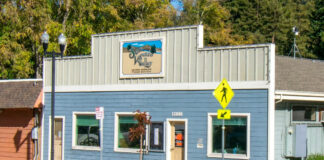Many people these days who are having routine colon screening exams, are being told that they have a condition called diverticulosis which is the presence of small pockets or pouches in the wall of the large bowel found just above the rectum. Risk factors for diverticulosis include inadequate intake of dietary fiber, lack of exercise, and aging. Diverticula are found in up to 60 percent of people by age 60, and the percentage keeps climbing with age.
Most people who are told they have this condition are surprised to find out because they have not had, and probably will never have, any symptoms of the disease. However, at some point in time some 10 percent to 20 percent of those who have diverticula will develop an infection in one of these pouches which is then called diverticulitis. (The suffix “itis” means inflammation.) It has long been thought that eating popcorn, nuts, or seeds would contribute to diverticulitis by becoming trapped in a diverticula, but this has since been disproven.
Common symptoms of diverticulitis are increasing pain and tenderness in the left lower abdomen, fever, nausea, and either diarrhea or constipation. Your doctor will likely order a blood count which may show an increase in the white blood cells indicating an active infection. A CT scan of the abdomen will often confirm the diagnosis.
Most of those in the early stages of diverticulitis can be treated as an outpatient with antibiotics for up to two weeks, pain medicine as needed, and a liquid diet for a few days. In most cases this is all the treatment that is necessary. If there is no significant improvement in two to three days, or if symptoms worsen at any time, a prompt medical re-evaluation is necessary.
Potential complications of diverticulitis necessitating immediate hospitalization are:
n An infected diverticula filled with pus (called an abscess).
n Rupture of an infected diverticula spilling contents of the bowel into the abdominal cavity which can lead to a life threatening infection.
n A bowel obstruction where the bowel stops working.
At this stage, treatment will include powerful intravenous antibiotics, IV fluids with no liquids or food by mouth, and adequate pain control. Surgery may be needed on an emergency basis to remove the infected bowel, or it may be delayed and done at a later date when the infection/inflammation has calmed down.
Up to 40 percent of those who have recovered from non-complicated diverticulitis will have one or many more attacks in the future.
Some now think that recurrent diverticulitis is due to underlying inflammatory changes in the affected portion of the bowel. There is hope that an anti-inflammatory drug currently used to treat colitis may go a long way in treating recurrent diverticulitis.
If you have worsening pain in the left lower abdomen or no improvement of pain for a few days, whether or not you know you have diverticular disease, seek medical help immediately.
– Terry Hollenbeck, M.D., is an urgent-care physician at Palo Alto Medical Foundation Santa Cruz in Scotts Valley. Readers can view his previous columns on his website, valleydoctor.wordpress.com, or e-mail him at va**********@*******al.net. Information in this column is not intended to replace advice from your own health care professional. For any medical concern, consult your own doctor.












